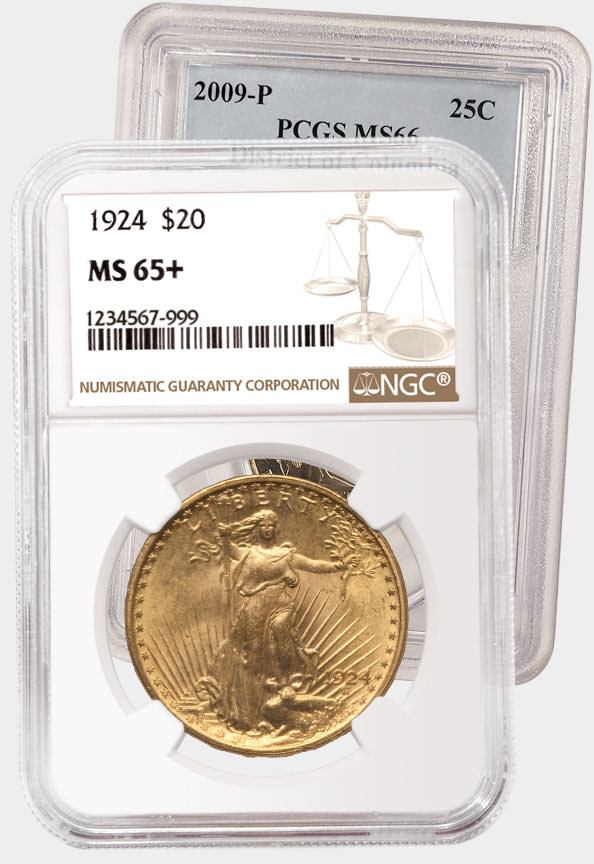USA Coin Album: America's Improbable Coins — Part 1
Posted on 4/10/2018
This month I'll take a look at some United States coins that were not likely to have been produced, yet somehow became reality. I won't include ultra rarities such as the 1913 Liberty Head nickels or the 1894-S dimes, as these are known to have been coined deliberately as collectibles, rather than being made for general circulation. More interesting, in my opinion, are the circulating coins that make one say "Hmmm..." In addition, each of these coins can be obtained without a large expenditure.


The first oddity is from our longest-running coin series. In 1922, the nation was in midst of a severe economic recession, and the coining of most denominations was on hold, while supplies of existing pieces were still being distributed. Silver dollars, double eagles and commemorative half dollars were struck that year, but they all served some purpose other than routine commerce. Only the cent was made for active circulation, but the numbers already on hand in vaults precluded a large production. Why the Denver Mint made a mere 7,160,000 cents is something of a mystery, as there were plenty of "pennies" idled in Federal Reserve Banks and even the Philadelphia and San Francisco Mints. In fact, the Denver Mint itself had more than 20 million cents on hand at the end of the fiscal year (June 30, 1922), nearly three times the number coined for 1922!
The entire production occurred during January and February, and it appears to have been performed carelessly. Most 1922-D cents were made from worn dies having blurry details. To extend the life of these dies, workers would polish out the erosion lines to again smooth the fields, but this only left fewer details. In extreme instances, the mintmark was eradicated from the obverse die, and these "No D" cents have been popular ever since the 1930s-40s, when they were heavily promoted by Texas coin dealer Maurice Scharlack. Though highly sought by Lincoln cent collectors, examples are not especially rare. Indeed, the real rarity is a well struck 1922-D cent coined from fresh dies.


The switch from cents of copper-nickel to ones of bronze occurred in 1864. The heavy nickel cents were widely hoarded during the Civil War, and the need to replace them in commerce was great, so a bronze two-cent piece was authorized under the same law (effectively two coins with one strike). Both denominations were produced in large numbers for the first few years, but mintages declined toward the end of that decade. By 1871, there were too many in circulation, and their limited legal tender status hindered attempts to deposit them at banks. A law passed that year provided for their redemption and reissuance, as needed. As a consequence, the production of both cents and two-cent pieces hit a low point.
While cents remained among the most widely used coins for many years, the day of the two-cent piece had passed. A mere 65,000 examples were struck in 1872, the final year of circulating coinage. It seems that this issue could have been avoided altogether, with so many older pieces being redeemed, and it has become a very scarce entry across all grades.
This odd denomination was introduced in 1851 as the nation's first subsidiary silver coin, meaning that it was intentionally worth less than its face value. This radical step was prompted by the near complete absence of silver coins in circulation after 1850. A fall in the price of gold had made them worth more than face value, and Congress was slow in adapting the existing silver issues to this new reality. Thus, the "trime" was coined in large numbers until the weights of the half dime through half dollar were finally reduced in 1853. With this crisis now solved, production of the silver three-cent piece declined rapidly.
The entire series 1851-73 was struck at the Philadelphia Mint, with one notable exception. In the first year of issue, New Orleans produced 720,000 pieces. These carry a very prominent "O" mintmark and are highly sought for their novelty. The New Orleans Mint never again struck this denomination, and it remains something of a mystery why it did so at all. Fortunately for today's collectors, most first-year coin types are saved in sufficient numbers by the general public that they remain affordable. Only in the higher Mint State grades is the 1851-O trime an expensive coin.
The greatest economic depression the modern world has known was reaching its apex as 1931 dawned, but it was still not evident that few additional coins would be needed that year. The San Francisco Mint produced a mere 194,000 nickels in January...and then stopped. Reviewing its production records in November, Acting Mint Director Mary M. O'Reilly became alarmed, as the limited output would create an instant rarity subject to speculative hoarding and profiteering. She ordered the San Francisco Mint to resume coining nickels through the end of the year, resulting in a total production of 1,200,000 pieces. That's still a modest mintage for the series, and the 1931-S nickel became the subject of hoarding just the same. Indeed, original rolls survived as late as the 1980s. In retrospect, we can only wonder why the San Francisco Mint struck nickels at all that year, as it already had a reserve of the 1930-S edition not fully distributed until 1935.
David W. Lange's column, “USA Coin Album,” appears monthly in The Numismatist, the official publication of the American Numismatic Association.
Stay Informed
Want news like this delivered to your inbox once a month? Subscribe to the free NGC eNewsletter today!


